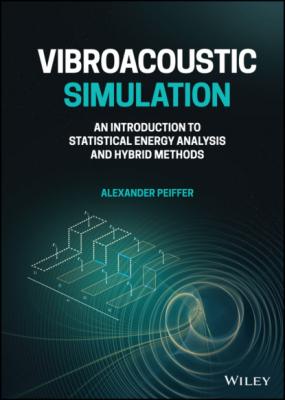Vibroacoustic Simulation. Alexander Peiffer
Читать онлайн.| Название | Vibroacoustic Simulation |
|---|---|
| Автор произведения | Alexander Peiffer |
| Жанр | Отраслевые издания |
| Серия | |
| Издательство | Отраслевые издания |
| Год выпуска | 0 |
| isbn | 9781119849865 |
This book is about simulation, but simulation is nothing without validation based on tests. In my view both – simulation and tests – are required to perform a good acoustic design and noise control engineering. Thus, chapter 13 briefly summarizes test and correlation methods together with an outlook to further topics of simulation and ongoing research in the field of acoustic simulation.
In most cases the life of an acoustic engineer means solving the target conflict between the acoustic performance and costs, weight, and space requirements. This is the reason why design engineers are not always the best friends of acousticians during the design phase. The more important it is that you are able to calculate the effect of your decisions for efficient application of the sometimes rare acoustic resources. I hope that this book provides some support for this demanding task.
Coming back to my initial motivation: If I would have to hold a lecture on vibroacoustic simulation now, I would sleep much better.
Alexander Peiffer
Planegg, Germany
15 October 2021
Acknowledgments
Special thanks goes to my former colleague Ulf Orrenius who wrote the train- and motivation section of chapter 12. His great experience and knowledge strongly enriched the content of this chapter.
I would also like to thank the Audi AG who provided the models to present the simulation strategy of automotive systems.
Acronyms
2DOFTwo degrees of freedommsMean squarermsRoot mean squareCFDComputational fluid dynamicsCFRPCarbon fiber reinforced plasticDFTDiscrete Fourier transformDVADynamic vibration absorberDOFDegree of freedomEMAExperimental modal analysisFEMFinite element methodFFTFast Fourier transformFTFourier transformGFRPGlass fiber reinforced plasticHVACHeating, ventilation, and air conditioningMACModal assurance criterionMDOFMultiple degrees of freedomMIMOMultiple input multiple outputNVHNoise, vibration, and harshnesPAXPassengerSDOFSingle degree of freedomSEAStatistical Energy AnalysisSISOSingle input single outputTBLTurbulent boundary layerTPATransfer path analysisTVATuned vibration absorber
1 Linear Systems, Random Process and Signals
Simple systems with properties constructed by lumped elements as masses, springs and dampers are a good playground to understand and investigate the physics of dynamic systems. Many phenomena of vibration as resonance, forced vibration and even first means of vibration control can be explained and visualized by these lumped systems.
In addition, a basic knowledge of signal and system analysis is required to put the principle of cause and effect in the right context. Every vibroacoustic system response depends on excitation by random, harmonic or specific signals in the time domain and we need a mathematical tool set to describe this.
An excellent test case to demonstrate and define the principle effects of vibration is the harmonic oscillator. It consists of a point mass, a spring and a damper. The combination of many point masses connected via simple springs and dampers provides some further insight into dynamic systems.
As those systems are described by components that have no dynamics in themselves they are called lumped systems. In principle all vibroacoustic systems can by modelled and approximated by this simplified approach.
1.1 The Damped Harmonic Oscillator
A realization of the harmonic oscillator is given by a concentrated point mass m fixed at massless spring with stiffness ks as in Figure 1.1. The static equilibrium is assumed at u = 0 being the displacement in x-direction. A damper connecting mass and fixation creates dissipation.
Figure 1.1 Damped harmonic oscillator with initial conditions a) and external force excitation b). Source: Alexander Peiffer.
1.1.1 Homogeneous Solutions
Without external excitation as shown in Figure 1.1 a) the motion depends on the initial conditions at time t = 0 with the displacement u(0)=u0 and velocity vx(0)=vx0. The damping is supposed to be viscous, thus proportional to the velocity Fxv=−cvu˙. The equation of motion
is a homogeneous second order equation with a solution of the form u=Aest. Entering this into Equation (1.1) leads to the characteristic equation
with the two solutions
Hence,
with B1 and B2 depending on the initial conditions. The root in Equation (1.3) is zero when cv equals 4mks. This specific value is called the critical viscous damping damping
We use the following definitions:
ω0 is the natural angular frequency, ζ is ratio of the
